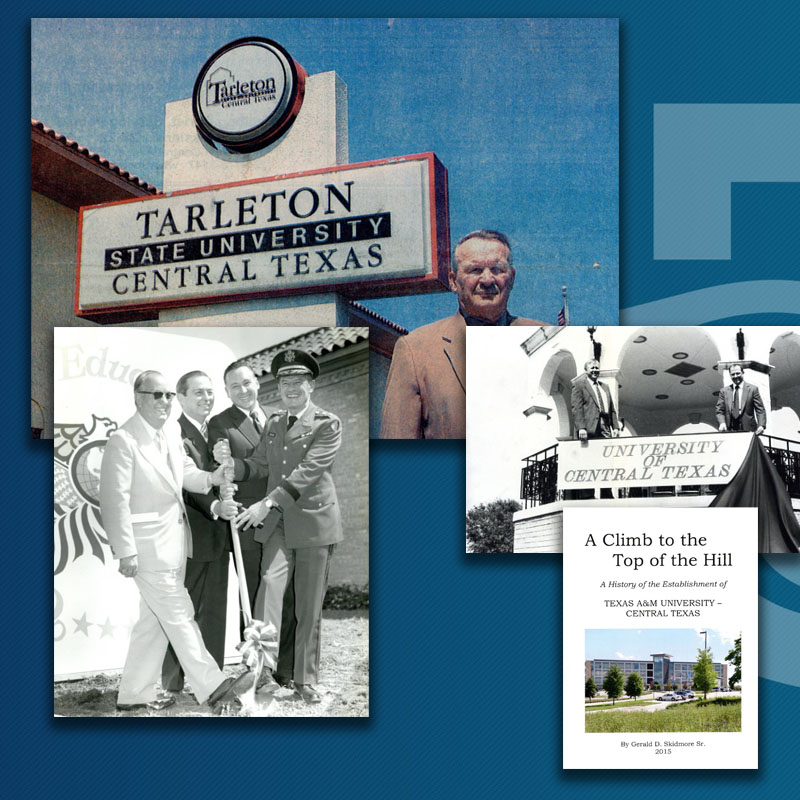
In a state known for independence, there are books and songs and stories aplenty celebrating Texans and their rugged determination.
The only state to have been its own country, Texas and its citizens have proven themselves to be fiercely independent, community-minded, and unwilling to shrink from adversity – a place where people with a goal come together to do things bigger and better than they might accomplish individually.
There’s an abundance of evidence of the things that have been accomplished because of this “can do” spirit – and the university that now sits on a 672-acre plot of land on the corner of Highway 195 and Clear Creek Road in Killeen is about to celebrate its 15th anniversary this May owing to the determined efforts of Central Texans past and present.
More than 50 years ago, it was little more than an ambitious notion – until it was brought into being by those unwilling to quit on bringing undergraduate and graduate educational opportunities to the community.
It was, even then, a bold dream, achieved by virtue of planning and sacrifice. Community leaders understood that the county and its residents would thrive in the future to the extent that opportunities for bachelor’s and master’s degrees were local.
Traditional university students had one choice: a well-regarded private university nearby or access to public universities via a long commute north to Stephenville or south to Austin.
For a while – in fact, for a good long while – that is just how it was. But the lack of a public university had consequences more important than an inconvenient commute.
Those who banded together to create a local public university knew that the future growth of communities in and around Bell County and the region would thrive only if the people who lived there had access to undergraduate and graduate education that was affordable, reputable, and local. So, they set themselves to work on bringing it about.
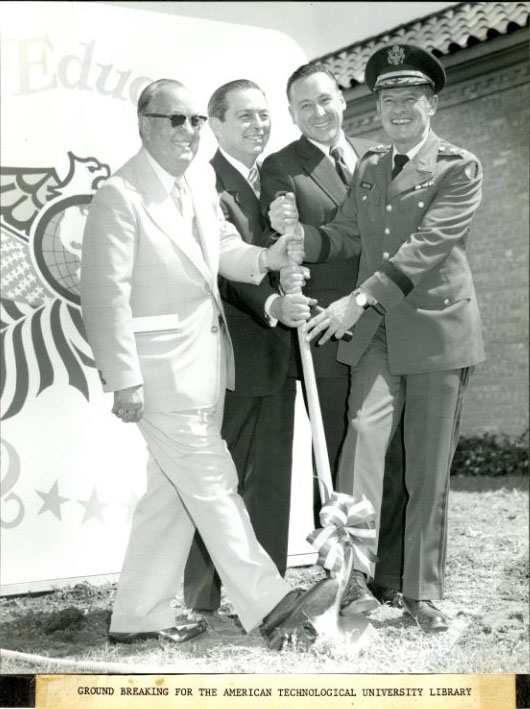 By 1973, American Technological University was created, enrolling 260 students. By 1989, it changed its name to University of Central Texas, enrolling 539 students taught by 39 full-time faculty members. By 1999, more than 1,000 students were enrolled.
By 1973, American Technological University was created, enrolling 260 students. By 1989, it changed its name to University of Central Texas, enrolling 539 students taught by 39 full-time faculty members. By 1999, more than 1,000 students were enrolled.
University officials estimate that ATU and UCT awarded 9,076 undergraduate and graduate degrees from 1973 to 1999. Many were military men and women and their family members. Most, if not all, of them were average income adults with families.
And, at a time when women and first-generation students were under-represented in many universities, those enrolling and graduating were often the first in their families to complete university degrees.
The combined successes of almost 10,000 everyday people – now graduates – propelled community leaders who formed a task force and continued to make their case in the legislature for the creation and funding for A&M-Central Texas.
Because Texans – and perhaps especially Central Texans – just don’t know the word quit.
And that kind of determination – well, it’s more rare than the word itself implies. It is born of grit inspired by a worthy goal. And when that goal quite literally changes the trajectories of the thousands of lives who benefit from it, there is no retreat. There is only resolve and reward.
We Could Never Give Up: Community Leaders Persis
in Their Efforts to Bring Public University to Central Texas
On the Texas A&M University-Central Texas campus, in the Beck Family Heritage Hall, there is a visual tribute to the university’s history that spans the entire length of the west wall of the first-floor lobby.
Its purpose is to pay homage to the institutional genealogy and the efforts of community leaders whose vision, persistence, and patience brought A&M-Central Texas into being.
Named The Eula “Sis” Beck University Legacy Wall, it was generously funded by Colleen Beck, daughter of Bernice “Bernie” Beck and Eula “Sis” Beck, dedicated to the preservation of the 51-year campaign created access to university educational opportunities for the county and region.
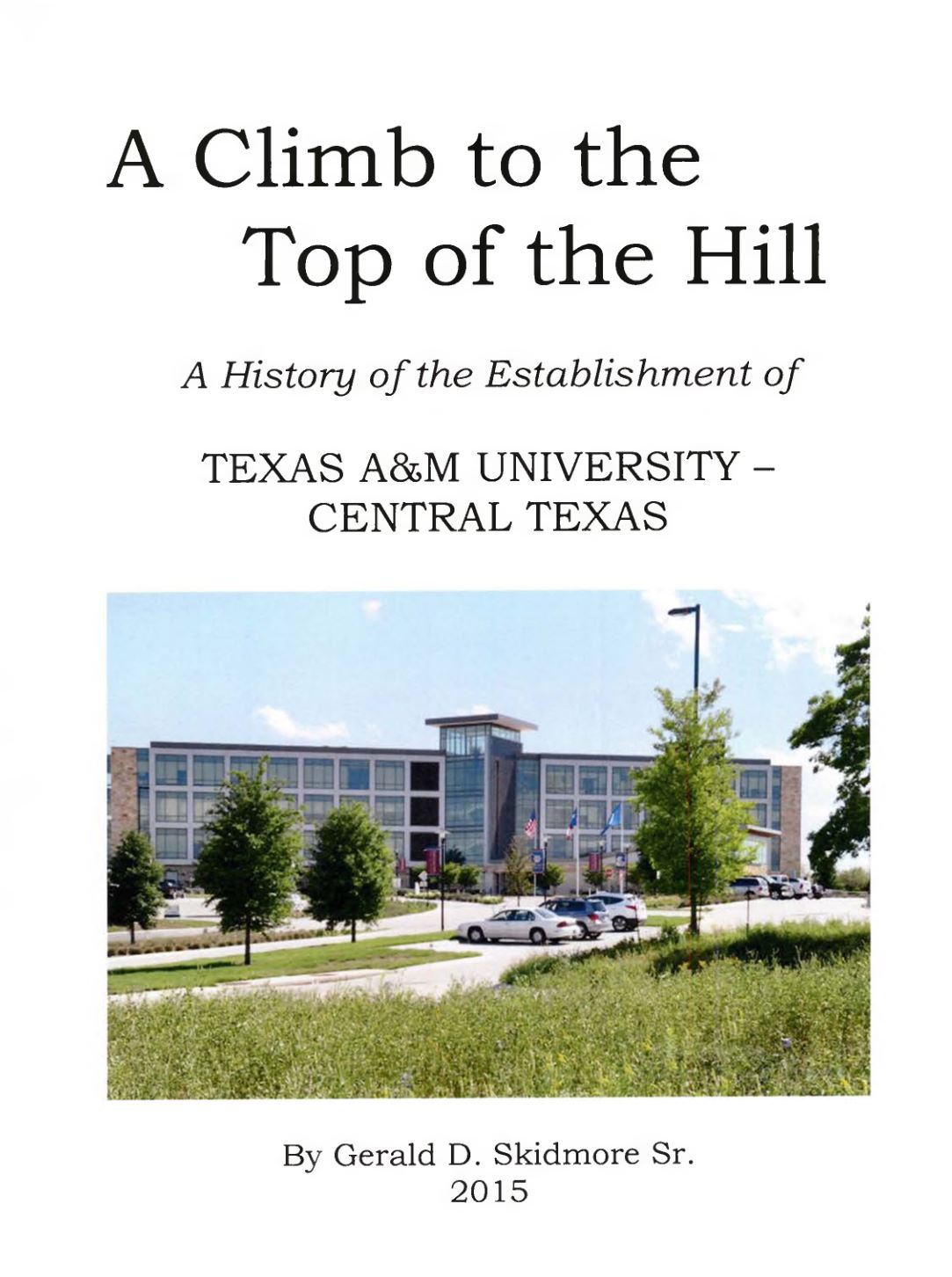 In 2015, the details of that arduous journey were thoughtfully researched and written by the late Gerald D. Skidmore, Sr., who aptly titled his book, “A Climb to the Top of the Hill.” In it, he outlined the myriad and complex legislative, state administrative, and agency challenges that the Central Texas University Task Force confronted.
In 2015, the details of that arduous journey were thoughtfully researched and written by the late Gerald D. Skidmore, Sr., who aptly titled his book, “A Climb to the Top of the Hill.” In it, he outlined the myriad and complex legislative, state administrative, and agency challenges that the Central Texas University Task Force confronted.
Gen. (Ret.) Pete Taylor, who chaired the task force from 1995 until the culmination of its mission in 1999, remembers suggesting that task force members reconsider their vocabulary when discussing the variety of political obstacles they had to strategically address – especially when it seemed as if more than two decades of their best efforts at that time could have easily been in jeopardy.
“I would always remind us that it was not a matter of ‘if’ we create this new university,” he remembered stoically. “It was a matter of ‘when.’ We couldn’t ever give up.”
Think of it for a moment: that task force was 22 years into an entirely different kind of battle that was every bit as strategic and in need of bright, hard, and abject bravery. They had won significant battles already to get where they were, but even those did not guarantee their success. Until it did.
By 1995, Governor George W. Bush, in consultation with the task force, asked for a formal review of the status of higher education opportunity in the region, and those results confirmed what task force leaders already knew: a public and state-funded university was crucial.
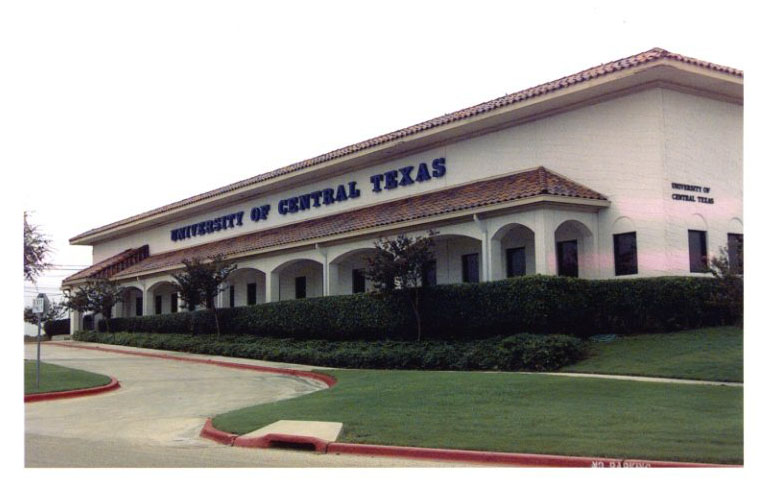
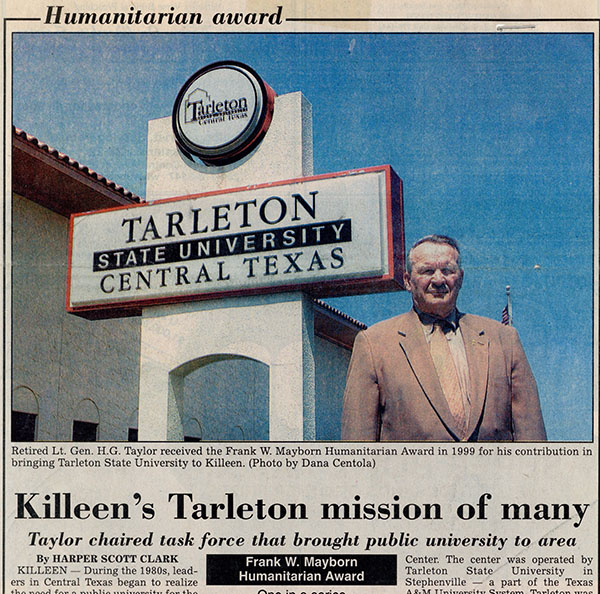 In 1999, UCT voluntarily dissolved, transferring its $7M in assets to the State, and becoming Tarleton State University-Central Texas.
In 1999, UCT voluntarily dissolved, transferring its $7M in assets to the State, and becoming Tarleton State University-Central Texas.
Around that same time, perhaps a bit ironically, on August 13, 1999, the University of Central Texas – which, by then, had enrolled 1,150 local students, held its final commencement ceremony celebrating the graduates that – had it not been for its unlikely existence – may well have never been there to cross the commencement stage.
Then University President, the late Pauline Mosely, Ph.D., who had, at the time, been with UCT for 40+ years as a faculty member, professor, chair, dean, and senior administrator in an age when such things were unheard of, conferred 125 undergraduate and graduate degrees that evening.
Asked by the Killeen Daily Herald to offer her perspective on the transition which was the end of one university and the beginning of another, she said that joining as Tarleton State University-Central Texas would bring new programs and stability.
And, as profoundly as ever, she added prophetically, “It’s going to be an interesting adventure.”
Hope Becomes a Dream and a Dream Becomes Real:
Texas A&M University-Central Texas Opens in 2009
Although there’s plenty of evidence that good fortune was a part of the A&M-Central Texas history, the luck was brought about by giants – women and men who did not wait for luck to happen. They made their luck by sheer force of will.
In the spring of 1998, via legislative agreement and the approval of the Texas A&M University Board of Regents that Tarleton State University System Center-Central Texas became real on September 1, 1999.
Those who worked for the university then describe that experience euphemistically, saying that it was a bit like building an airplane while flying in it.
By September of 1999, the new center was enrolling 1,272 students, and 18 months later, it had grown to 1,459. In March of 2009, enrollment reached the legislatively required number, and while not quite – just like that – Texas A&M University-Central Texas was born as the 11th regional university of the Texas A&M University System when, in May of 2009, Governor Rick Perry signed SB 629.
The now-named Gen. (Ret.) Robert M. Shoemaker Founders Hall was dedicated on May 25, 2012 and promptly filled with students and staff. The dedication for one building included a groundbreaking for the second, Warrior Hall. And Heritage Hall, now named the Beck Family Heritage Hall, opened in January, 2019. A fourth building, the Centralized Operational Reliability and Efficiency building, broke ground April 11, 2024.
But as important as buildings are, the most important things point back to the founders who made it happen and the people who followed their belief that higher education would matter greatly to Central Texas.
ATU and UCT, for example, awarded a total of 9,086 degrees. And, in the past 15 years, A&M-Central Texas bested their record, awarding 10,839 degrees since 2009. Put together, that is horseshoe close to 20,000 students who may not have had a place to go, but for the wisdom and foresight of the founders.
And speaking of founders, those who raised substantial sums of money so that the university would have scholarships to offer – namely the A&M–Central Texas Foundation, for example – has raised $10M since its beginning three years before the university was official.
Today, there are 30 undergraduate and 19 graduate programs where there might have otherwise been no opportunity at all. Four new programs, including graduate degrees in nursing administration, social work, and public administration, are planned to open, pending state approval.
All because a community of leaders chose not to wait for someone to do it for them. Because no matter how fragile or fractured any point in time might seem, the founders knew – or maybe they felt it in their bones – that if history teaches anything, it is that educational opportunity allows hope to become a dream and a dream to become real.
